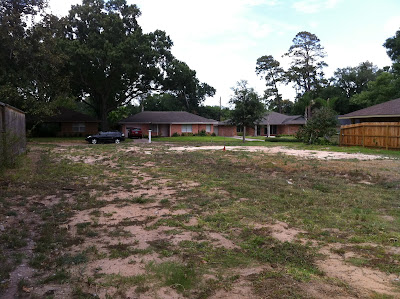Digging out the pad for the foundation
Installation of the silt fence
The silt fence is part of credit SS 1.1 Erosion Controls During Construction, which is a prerequisite. The fence helps control storm water runoff from the site, which can get yuckier than normal during a construction project and can also be more voluminous if the site around the building gets compacted during construction.
We are happy LEED encourages our project team to do its part to keep our local waterways clear!













